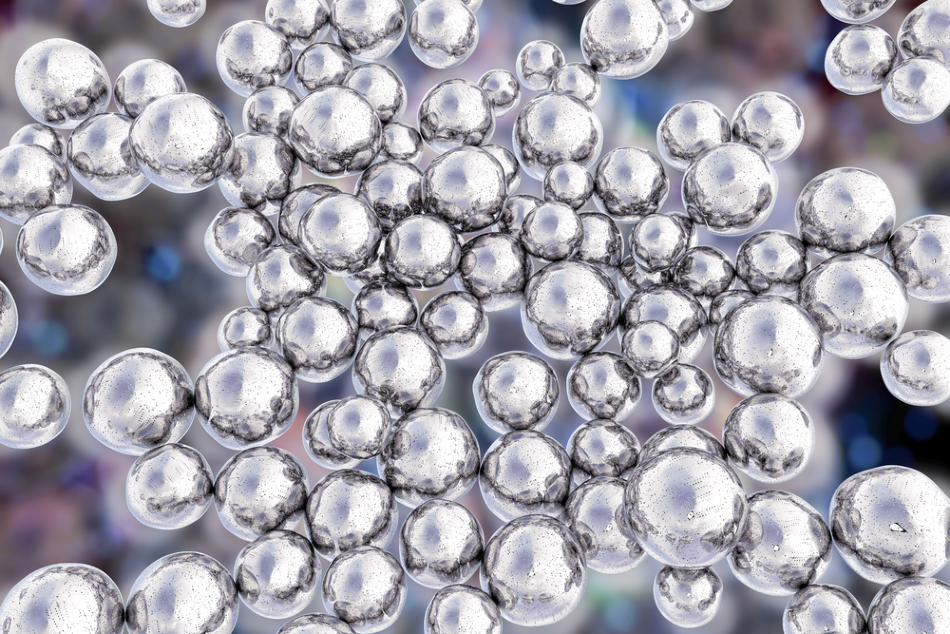
Image Credit: Kateryna Kon/Shutterstock.com
Sensors are used for detecting a range of phenomena, such as chemical, electrical, mechanical, radiant, magnetic or thermal changes or events. Today, most sensors are manufactured using semiconductor materials, typically in a stack of two-dimensional patterns that create a three-dimensional final product.
Doping is an important step in semiconductor manufacture. When doping with nanoparticles, semiconductors can be produced for highly sensitive sensing applications.
What is Doping?
Doping is the process of introducing impurities to a base material in order to impart desirable properties of the dopant into the new material. It is the means by which semiconductors can be manufactured at industrial scales, and it is also key to the manufacture of semiconductor sensors.
What are Semiconductor Sensors?
Sensors manufactured from semiconductor materials utilize the peculiar electromagnetic properties of semiconductors to produce highly sensitive sensors. Due to ionization in the semiconductor material – and its crystalline structure displaying lattice symmetry – semiconductor sensors can be used to detect minuscule variations in electrical outputs caused by various catalysts, depending on the event or change that the sensor is designed to measure.
Doping with Standard Particles
Semiconductor materials have long been known to include impurities which impart desirable properties onto the material. In the nineteenth century, crystal radio detectors exploited this naturally occurring phenomenon in a sensing application.
The process of doping for the manufacture of semiconductor materials was developed in the 1940s by American physicist John Robert Woodyard (who is also famous for his significant contribution to RADAR technology). In his patent application, Woodyard described doping germanium with a germanium-phosphorus alloy to produce a semiconductor material with numerous possible applications including radio detection.
Doping with Nanoparticles
In the last decade, the field of semiconductor manufacture has progressed significantly due to advances in nanotechnology. Now, nanoparticles can be used in the doping process to produce semiconductor sensors with extremely high degrees of accuracy and precision.
There are now many examples of researchers exploring the use of nanoparticles in semiconductor doping for sensor applications. Below are just a few.
Selective NO2 gas sensors
Using the sol-gel method, researchers have been able to synthesize nickel-oxide (NiO) doped with cerium (Ce) – Ce:NiO. A systematic study of this material revealed that, applied in a gas sensing setting, Ce:NiO performs better than traditional materials for sensing nitrogen dioxide (NO2).
Using gold nanoparticles to create tunable sensors
Another recent study focused on the tunable nature of doping – the ability of manufacturers to precisely control levels of impurities in semiconductor materials – in a volatile-organic-compound (VOC) sensing application.
The researchers doped molybdenum disulfide (MoS2) with gold (Au) nanoparticles only tens of nanometers in size. These nanoparticles enabled charge transfer between MoS2 and Au, which in turn enables sensors to be produced that will have multiple responses to various presences of target VOCs.
Polystyrene nanoparticles and biosensors
In the world of biosensing, precise mechanical sensors can be used to monitor bodily processes such as swallowing, back posture and pulse in real-time. A study has recently shown how graphene oxide doped with polystyrene nanoparticles can act as a flexible, highly responsive piezoelectric sensor for this biosensing application.
Nanoparticle doping and electrochemiluminescence
Finally, researchers have found that doping nanoparticles combined with the electrochemiluminescence (ECL) transduction method can produce semiconductor materials for the manufacture of sensing devices with hitherto unheard-of sensing capabilities and sensitivities. This new method is particularly interesting for biosensing applications, where precise sensing of chemical and mechanical events could be the difference between early, life-saving diagnoses and deadly uncertainty.
Click here to find out more about nanotechnology equipment in several industries
References and Further Reading
Cho, S.-Y., Koh, H.-J., Yoo, H.-W., Kim, J.-S. and Jung, H.-T. (2017). Tunable Volatile-Organic-Compound Sensor by Using Au Nanoparticle Incorporation on MoS2. ACS Sensors, 2(1), pp.183–189.
Gawali, S.R., Patil, V.L., Deonikar, V.G., Patil, S.S., Patil, D.R., Patil, P.S. and Pant, J. (2018). Ce doped NiO nanoparticles as selective NO 2 gas sensor. Journal of Physics and Chemistry of Solids, 114, pp.28–35. DOI:10.1016/j.jpcs.2017.11.005.
Gong, T., Zhang, H., Huang, W., Mao, L., Ke, Y., Gao, M. and Yu, B. (2018). Highly responsive flexible strain sensor using polystyrene nanoparticle doped reduced graphene oxide for human health monitoring. Carbon, 140, pp.286–295.
Thomas, L. (2019). What are Semiconductor Sensors? [online] Available at: https://www.azosensors.com/article.aspx?ArticleID=1583.
Valenti, G., Rampazzo, E., Kesarkar, S., Genovese, D., Fiorani, A., Zanut, A., Palomba, F., Marcaccio, M., Paolucci, F. and Prodi, L. (2018). Electrogenerated chemiluminescence from metal complexes-based nanoparticles for highly sensitive sensors applications. Coordination Chemistry Reviews, 367, pp.65–81.
Woodyard, J.R. (1950). Nonlinear circuit device utilizing germanium. [online] Available at: https://patents.google.com/patent/US2530110.
Disclaimer: The views expressed here are those of the author expressed in their private capacity and do not necessarily represent the views of AZoM.com Limited T/A AZoNetwork the owner and operator of this website. This disclaimer forms part of the Terms and conditions of use of this website.